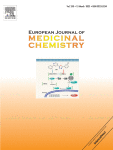Nervewing
Bluelighter
- Joined
- Jan 5, 2016
- Messages
- 219

I've had the privilege of researching two entirely novel dissociatives, POxP and PThP, technically analogues of PCP, though technically not truly arylcyclohexylaines.
The short version is- they are not too potent and have a short duration. PThP is not too interesting, but POxP had a unique empathogenic effect. I go into more detail later.
So makes their structures special? The difference lies in that central cyclohexane ring, the middle part of the name Arylcyclohexylamine. Arylcyclohexylamines don't normally tolerate variation to that central ring, expanding to a cycloheptane and reducing to a cyclopentane both see a substantial drop in activity (Buyukbingol et al 2007, Wallach 2014). While a six member ring seems best, it would appear that the only one tolerated is not a cyclohexane- meet POxP and PThP!
Both of these compounds contain an either an oxane or a thiane ring; that is a single bonded six member ring with one of the carbons replaced with an oxygen or a sulfur respectively. POxP and PThP are anaogues of PCP, but the cyclohexane is replaced with an oxane or a thiane. Technically, they would be classified as Aryloxanylamines and Arylthianylamines respectively.
The only relevant information I could gather about these compounds was a thread on Bluelight, where a user claimed to have read an article in the European Journal of Medicinal Chemistry that stated that this compound demonstrated NMDA receptor affinity and antagonist action from PThP. Unfortunately they (and no other users) were actually able to locate this article.
I tested them via GC/MS, just to confirm that they were indeed these novel compounds: GC/MS for POxP Whereas you can see the single peak shows a molecular weight of ~245, corresponding to that of POxP GC/MS for PThP Whereas you can see the single peak shows a molecular weight of 261, corresponding to that of PThP.
I have a full experience report written for both of these compounds, which I will post soon! I steadily titrated my dose up for each one, though I had to eventually take some leaps as I only had a very limited amount to research.
My summary of each is:
POxP
POxP is a short acting and impotent dissociative that dosed at ~300+ mg orally. I am not sure about other routes of administration, other than it seemed to be equipotent intranasally. I did not try a much higher dose via that route than threshold effects. Whether it is active vaporized is unknown.
It has a short duration, ~3 hours. It is a heavy, floppy dissociative like ketamine, smooth and gentle and a bit sedating, and a bit mentally stimulating. The dissociative effect are ultimately nondescript and minor though. Most interesting however, is a slight empathogenic effect that feels like a flood of serotonin. It is like a combination of an 5/6-MAPB type empathogen (less stimulation than MDMA) combined with ketamine. It's a wonderful dreamy social state.
Dosage (Very rough)
ROA: Oral
Threshold: 160 mg
Light: 160-250 mg
Medium: 250 mg - 350 mg
Heavy: 350 mg+
Duration
ROA: Oral
Onset: 30 min-1 hr
Comeup: 20-40 min
Peak: 30 min-1 hr
Comedown: 1-2 hrs
Total: 2.5-4 hrs
PThP
PThP is less exciting. It is a dull and brief experience like POxP, but without that empathogenic effect. It is slightly visual, but not much to talk about. Similarly heavy dissociation. Something of note is that it is more potent and longer lasting than POxP.
Dosage (very rough)
ROA: Oral
Threshold: 100 mg
Light: 100-200 mg
Medium: 200-300 mg
Heavy: 300+ mg
Duration
ROA: Oral
Onset: 30 min-1 hr
Comeup: 20-40 min
Peak: 1 -2 hrs
Comedown: 2-3 hrs
Total: 4-6 hrs
These are two super interesting compounds just in term of structure-activity relations- I wonder what other ways the center ring can be modified and still yield active dissociatives- and to what does POxP owe its empathogenic effects? How can that molecule be modified to perhaps amplify those effects? And how could either compound be amplified to see a more workable potency? Perhap a thiophene ring in place of the phenyl? (TOxP and TThP respectively). So much to be discovered, and this is just the start! Sadly I do not think these compounds will be on the market any time in the near future, but I figured I could offer this up as data for structure-activity reactions and perhaps to inspire further research from those with the resources to do so!
References:
- Buyokbingol E, Sisman A, Akyildiz M, FN Alparslan, Adejare A (2007) Adaptive neuro-fuzzy inference system (ANFIS): a new approach to predictive modeling in QSAR applications: a study of neuro-fuzzy modeling of PCP-based NMDA receptor antagonists. Bioorganic & Medicinal Chemistry 15(12): 4265-4282
- Wallach J (2014) Structure Activity Relationship (SAR) Studies of Arylcycloalkylamines as N-Methyl-D-Aspartate Receptor Antagonists. Ph.D Dissertation, University of the Sciences in Philadelphia. 3690548
Last edited:

